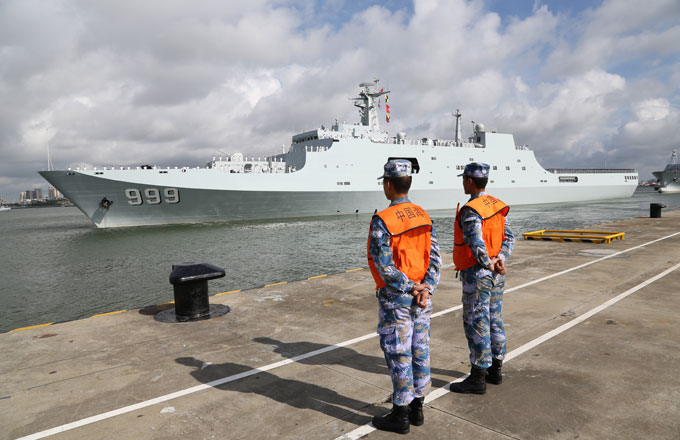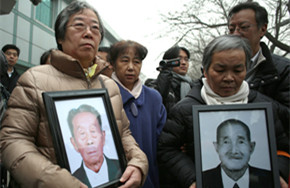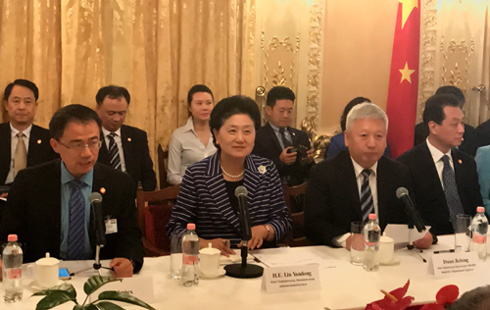First filmed evidence of 'comfort women' found in US archives
 |
|
Footage from 1944 shows "comfort women" in Songshan, Yunnan province, after its liberation from Japanese troops. SCREEN SHOT OF VIDEO/US NATIONAL ARCHIVES AND RECORDS ADMINISTRATION |
Newly uncovered footage of a group of "comfort women" provides filmed evidence of the Imperial Japanese Army's sexual enslavement of women from Asian countries during the World War II era.
The black-and-white footage shot in 1944 by a US Army private in Yunnan province shows the women standing outside a brick house. They were barefoot and looked nervous.
After a two-year search through US archives, researchers from Seoul University uncovered the footage at the US National Archives and Records Administration. The women were filmed after they were liberated by Chinese and United States allied forces as the troops reclaimed Songshan, in Yunnan, from the Japanese.
The Japanese military kept an estimated 200,000 women as sex slaves before and during World War II.
The researchers identified the women as Korean by matching their clothes and facial appearance with existing historical photos-a set of photos taken by a private in the US Army Signal Corps' 164th Photographic Unit and rediscovered in 2000.
"The film clearly shows the fear and anxiety on the women's faces and body movements. As a woman, I can clearly identify with these women as they stood barefoot, so helpless and scared," said Lillian Sing, co-chair of the San Francisco-based Comfort Women Justice Coalition.
Calling the footage "the most powerful and persuasive evidence", Sing, a retired Superior Court judge in San Francisco, said, "In a court of law, this film is considered the best evidence and a smoking gun showing what happened in 1944."
Before the film clip surfaced, the only visual images had been still photographs and accounts from survivors.
"This is vivid, moving, proactive, and almost alive film, and what it showed cannot be denied," Sing said.
The discovery of the footage is significant as it refutes convincingly Japan's claim that there is no evidence of "comfort women", said Peipei Qiu, professor of Chinese and Japanese at Vassar College and author of the award-winning book Chinese Comfort Women: Testimonies from Imperial Japan's Sex Slaves.
"This footage tied in with wartime records. The area of Tengchong, Songshan and Longling in Yunnan province was an important fortress on the vital wartime supply line in China," said Qiu. Her book also records this history.
According to the West Yunnan NGO Research Association for the Unresolved Issues of the Anti-Japanese War, the Imperial Japanese Army occupied Longling county in 1942, and within two weeks set up a military comfort station there.
Fighting among the soldiers took place frequently for the opportunity to use the station, so the Japanese Army transported about 100 "comfort women" from Taiwan and set up two more comfort stations at a temple and a church, said Qiu.
The Japanese solders also raped the captured local women and then detained them, setting up more comfort stations. Besides local women, local people also saw Japanese and Korean women confined in the comfort stations.
"What happened to the 'comfort women' in this station when the Japanese forces withdrew remains unknown, although there have been reports that, in nearby Lameng township and Tengchong county, Japanese troops forced Korean 'comfort women' to take mercuric chloride, while they shot and killed Chinese comfort women," Qiu said. Mercuric chloride is a poisonous substance found in some antiseptics and batteries.
"We have only 22 'comfort women' alive in China and 37 alive in South Korea. Justice cannot be delayed any longer," Sing said.




















